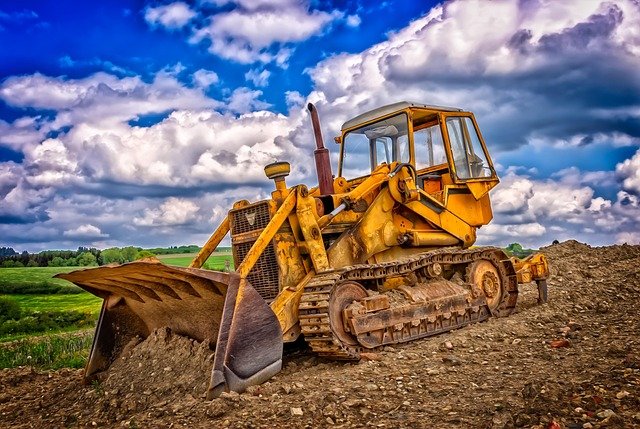What to Know About Mini Bulldozer Brands
Mini bulldozers are used for compact worksites where maneuverability and efficiency matter. Learning about common design features, attachments, and brand distinctions helps operators understand what contributes to performance across different project types.

The mini bulldozer market features several established manufacturers, each bringing distinct engineering approaches and feature sets to their machines. Brands like Caterpillar, John Deere, Komatsu, Bobcat, and Case offer compact dozer models designed for residential, commercial, and light industrial applications. These machines typically range from 25 to 110 horsepower and weigh between 3,000 and 20,000 pounds, making them suitable for projects where space limitations prevent the use of standard construction equipment.
When evaluating different brands, buyers should consider factors beyond just price. Dealer network availability, parts accessibility, warranty coverage, and resale value all play significant roles in the total cost of ownership. Some manufacturers excel in specific market segments, while others offer broader product lines with more customization options.
Design and Build Characteristics
Mini bulldozer construction varies considerably across brands, affecting durability, operator comfort, and maintenance requirements. Track systems represent one of the most significant design differences. Some manufacturers use rubber tracks that reduce ground pressure and minimize surface damage, making them ideal for landscaping projects. Others employ steel tracks that provide superior traction and longevity in rocky or abrasive conditions.
Engine placement and cooling system design also differ between brands. Certain models position engines for easier access during routine maintenance, while others prioritize weight distribution for improved stability on slopes. Cab designs range from open ROPS (Roll-Over Protective Structure) platforms to fully enclosed climate-controlled cabins. Visibility varies based on hood design, with some brands offering sloped hoods that improve sightlines to the blade edge.
Hydraulic system capacity determines how responsive controls feel and how much force the blade can exert. Higher-quality hydraulic components typically provide smoother operation and better fine control, which matters significantly when performing precision grading work. Undercarriage design affects maintenance intervals, with sealed and lubricated track systems requiring less frequent attention than older designs.
Attachments and Work Applications
The versatility of mini bulldozers expands dramatically through attachment compatibility. Most manufacturers design their machines to accept multiple blade configurations, including straight blades for general dozing, angle blades for side-casting material, and six-way blades offering tilt and angle adjustments. Some brands use proprietary quick-attach systems, while others employ industry-standard mounting plates that accept third-party attachments.
Beyond blades, many mini bulldozers can be equipped with rippers for breaking up hard soil or pavement, winches for pulling operations, and specialized grading attachments. Certain models accept backhoe attachments, effectively transforming the dozer into a multi-purpose machine. The availability and cost of these accessories vary significantly between manufacturers.
Work application suitability depends on machine specifications and attachment options. Landscaping contractors often prefer lighter models with rubber tracks and precise hydraulic controls. Utility installation crews may prioritize machines with higher pushing power and steel tracks. Agricultural users frequently select models with excellent ground clearance and simplified maintenance access. Understanding how different brands optimize their designs for specific applications helps buyers match equipment to their primary work requirements.
Comparing Performance Across Models
Performance metrics provide objective data for comparing mini bulldozers across brands. Ground pressure, measured in pounds per square inch, indicates how well a machine distributes its weight. Lower ground pressure reduces surface disturbance and improves flotation in soft conditions. Pushing capacity, typically measured in blade breakout force, determines how effectively the dozer can move material or clear obstacles.
Engine power and operating weight create a power-to-weight ratio that influences productivity. Machines with higher ratios generally complete tasks faster but may sacrifice fuel efficiency. Travel speed affects how quickly operators can reposition equipment between work areas. Hydraulic flow rates determine attachment responsiveness and cycle times.
| Brand/Model | Horsepower Range | Operating Weight | Key Features | Cost Estimation |
|---|---|---|---|---|
| Caterpillar D3K2 | 80 HP | 16,500 lbs | Hydrostatic transmission, excellent dealer network | $90,000 - $120,000 |
| John Deere 450K | 80 HP | 15,800 lbs | Electrohydraulic controls, superior visibility | $85,000 - $115,000 |
| Komatsu D39PX | 105 HP | 19,400 lbs | Powerful pushing force, durable undercarriage | $100,000 - $130,000 |
| Bobcat T870 | 92 HP | 11,515 lbs | Compact design, versatile attachment options | $75,000 - $95,000 |
| Case 650M | 97 HP | 17,200 lbs | Comfortable cab, intuitive controls | $80,000 - $110,000 |
Prices, rates, or cost estimates mentioned in this article are based on the latest available information but may change over time. Independent research is advised before making financial decisions.
Fuel efficiency varies between brands based on engine technology and hydraulic system design. Newer models with electronic engine management and load-sensing hydraulics typically consume less fuel than older mechanical systems. Operating costs extend beyond fuel to include maintenance intervals, filter replacement frequency, and expected component lifespan. Some manufacturers engineer their machines for longer service intervals, reducing downtime and labor costs.
Operator comfort and control precision affect productivity in ways that specifications cannot fully capture. Ergonomic control placement, seat quality, noise levels, and vibration dampening all influence how long operators can work effectively. Test operating different brands reveals subjective differences in control feel and overall machine responsiveness that impact real-world performance.
Selecting the right mini bulldozer brand involves balancing multiple factors including initial purchase price, operating costs, application requirements, and dealer support quality. While specifications provide useful comparison points, hands-on evaluation and consultation with experienced operators often reveal practical differences that matter most in daily use. Understanding how design characteristics, attachment options, and performance metrics align with specific work demands ensures buyers invest in equipment that delivers long-term value and productivity.




